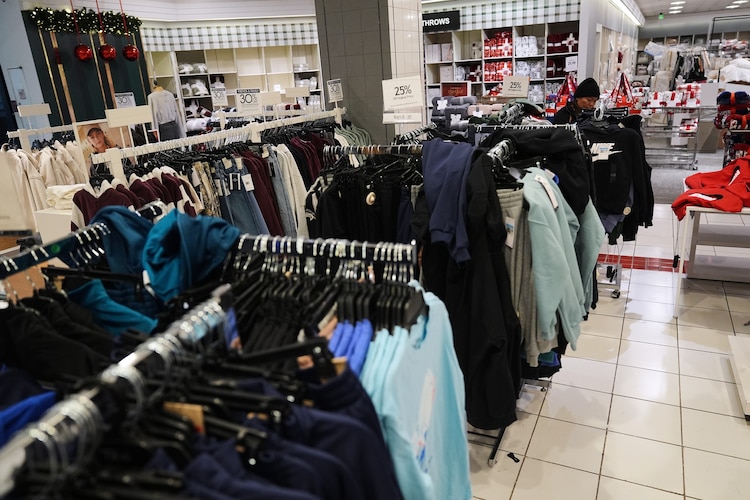
This article is more than
2 year old
Shares plummeted 25% as the pharmacy chain also lowered its guidance for the year.5 min read
Walgreens Boots Alliance Chief Executive Tim Wentworth is taking the struggling chain in a new direction, planning to close a substantial number of poorly performing stores and pulling back on the company’s plunge into the primary-care business.
Shares of the pharmacy chain plummeted 25% Thursday, after The Wall Street Journal reported Wentworth’s plans and the company failed to meet Wall Street’s expectations for quarterly earnings and lowered its guidance for the full year.
Walgreens will close a significant share of its roughly 8,600 stores in the U.S., Wentworth said in an interview with the Journal. The company hasn’t settled on a final number of locations to close, he said, but it is reviewing about a Wentworth also said Walgreens will reduce its stake in primary-care provider VillageMD, and will no longer be the company’s majority owner.
Walgreens, however, will stick with some of its other units and isn’t currently planning to unload its overseas pharmacy chain Boots or Shields Health Solutions, a specialty pharmacy firm, Wentworth said. He said Walgreens expected that it would be able to reassign staffers so that its U.S. retail footprint reduction didn’t result in a meaningful loss of jobs.
“We recognize where we are is a turnaround,” Wentworth said. “We recognize that we need to be focused on what are the parts of the business that we believe are contributing and have a future, and some of those need to change.”
Wentworth gave the Journal details about the company’s turnaround plans after Walgreens conducted a strategic review and ahead of reporting quarterly results that reflect the chain’s challenges.
Walgreens is a 123-year-old company and one of America’s most ubiquitous retailers, with stores that are neighborhood staples. Yet it has struggled for years because of financial pressures in its core pharmacy business.
Like other pharmacies, Walgreens has been facing smaller revenue growth from prescription drugs, which had been a major driver of sales. Pharmacies have also faced greater reimbursement pressure from the firms, known as pharmacy-benefit managers, that negotiate drug prices on behalf of insurers and employers.

Retail pharmacies have been losing money on certain high-priced drugs that have become more widely used, while bleeding shoppers to telehealth outfits that prescribe medicines and online pharmacies like Amazon.com, which owns its own pharmacy business.
The big chains have been closing unprofitable stores in response to investor concerns that they have overexpanded. They are, meanwhile, dealing with labor agitation from disgruntled pharmacists, and their efforts to grow through buying up doctors’ practices have faltered.
Wentworth took over as CEO last October after a career spent largely in the business of managing drug benefits. Since taking the helm, he has replaced several of Walgreens’s top executives with a new team.
He is expected to lay out details of the company’s plans for a strategic pivot in an earnings call Thursday with analysts.
One main takeaway from Walgreens’s strategy review, he said, was, “retail pharmacy is central to our future and to our overall customer and patient experience. It enables many other things, but it has to change.”
Walgreens’s earnings for its fiscal third quarter showed the extent of the company’s troubles. The results fell short of analysts’ projections, reflecting worse-than-expected consumer spending and a tweak in a key industry pricing index that is squeezing reimbursement to pharmacies.
Wentworth also said Walgreens is losing money on filling prescriptions for the fast-growing GLP-1 class of diabetes and weight-loss drugs, a category that includes blockbusters Ozempic and Mounjaro.

Walgreens said fiscal third-quarter sales were $36.4 billion, up 2.6% from a year earlier. Net earnings were $344 million, up nearly threefold from a year ago and reflecting better operating income, the company said.
The company lowered its full-year 2024 adjusted earnings guidance to between $2.80 and $2.95 per share.
Under review for closures, Wentworth said, are Walgreens stores that are close to one another. The company could efficiently serve consumers with fewer locations in those areas, he said.
Walgreens is also looking at stores dealing with theft and other issues. The company wants to work with cities to try to make those stores sustainable with steps such as “investing in public safety so that our customers and employees feel safe,” Wentworth said.
The company can reassign almost every employee affected by store closures, Wentworth said. “We don’t see this as an employee reduction, we see this as a footprint reduction,” he said.
Wentworth said Walgreens is also focusing on trimming the number of brands it offers and amping up a focus on women’s health, as well as bolstering its loyalty program.
Wentworth said the details of its divestment of VillageMD will be worked out with the management of the primary-care company, and Walgreens will likely retain a stake.
The divestment would mark a change in tack from the direction taken by Wentworth’s predecessor, Rosalind Brewer, who had focused on re-creating Walgreens as a major provider of healthcare. She had taken over from Italian billionaire Stefano Pessina, who had combined Walgreens with Europe’s Alliance Boots, pushed partnerships with firms including VillageMD and is now executive chairman.
In 2021, Walgreens agreed to invest $5.2 billion to gain a controlling stake in VillageMD. The chain took a major write-down on the value of its stake earlier this year.
Being a majority investor in primary-care and specialty-care providers “is a strategy that we are no longer pursuing,” Wentworth said.
Write to Anna Wilde Mathews at Anna.Mathews@wsj.com and Joseph Walker at joseph.walker@wsj.com